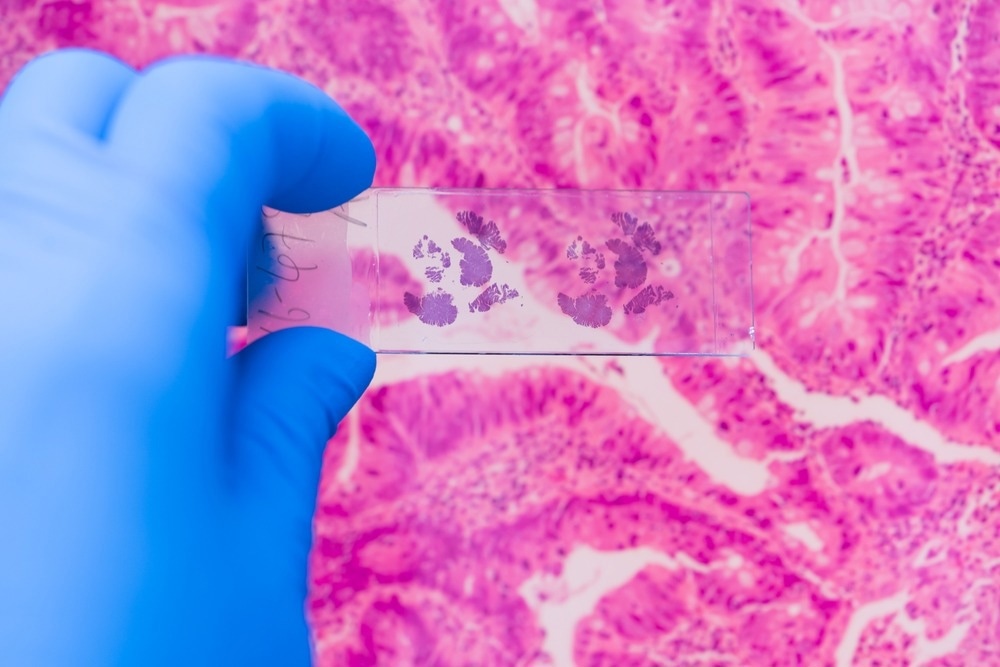A new artificial intelligence technology that reads medical images with exceptional clarity might allow time-pressed physicians to focus on crucial areas of medical diagnosis and image interpretation.

Image Credit: Komsan Loonprom/Shutterstock.com
Researchers at the University of Pennsylvania's Perelman School of Medicine created the technique, known as iStar (Inferring Super-Resolution Tissue Architecture), with the hope of assisting medical professionals in the diagnosis and treatment of tumors that might otherwise go unnoticed. With this imaging approach, doctors and scientists can identify cancer cells that would have been nearly invisible otherwise.
It also gives them a more comprehensive understanding of the entire spectrum of gene function. This technique can be used to automatically give annotation for microscopic images and assess if safe margins were reached via cancer procedures, opening the door for molecular disease detection at that level.
A study on the approach, co-authored by Mingyao Li, Ph.D., a professor of digital pathology and biostatistics, and research associate Daiwei “David” Zhang, Ph.D., was published in Nature Biotechnology.
According to Li, iStar can automatically identify vital immune formations known as “tertiary lymphoid structures” that are known to have anti-tumor properties. These formations are linked to a patient's likelihood of survival and likelihood of responding well to immunotherapy, which is frequently administered to treat cancer and necessitates extremely precise patient selection.
According to Li, this suggests that iStar could be an effective method for identifying the patients who would most benefit from immunotherapy.
The creation of iStar was undertaken as a component of the relatively recent area of spatial transcriptomics, which maps gene activity throughout the space of tissues. Li and her colleagues trained the Hierarchical Vision Transformer, a machine learning tool, using typical tissue pictures.
According to Li, it starts by segmenting images into several phases, going up and “grasping broader tissue patterns” after first going tiny and searching for minute details. The data from the Hierarchical Vision Transformer is subsequently absorbed by a network led by the AI system within iStar, which utilizes it to anticipate gene activity, frequently at almost single-cell resolution.
The power of iStar stems from its advanced techniques, which mirror, in reverse, how a pathologist would study a tissue sample. Just as a pathologist identifies broader regions and then zooms in on detailed cellular structures, iStar can capture the overarching tissue structures and also focus on the minutiae in a tissue image.
Mingyao Li, Ph.D., Professor, Digital Pathology and Biostatistics, University of Pennsylvania School of Medicine
Li and her colleagues assessed iStar on a variety of cancer tissue types, including mixed breast, prostate, kidney, and colorectal tumors, to gauge the tool’s effectiveness. In these experiments, iStar was able to automatically identify cancer and tumor cells that were difficult to distinguish with the human eye. With iStar serving as a layer of support, clinicians could be able to detect and diagnose more difficult-to-see or difficult-to-identify tumors in the future.
Apart from the therapeutic potential that the iStar approach offers, the tool operates at a very high speed in comparison to other AI tools of a similar nature. For instance, iStar completed its analysis in under nine minutes when it was configured with the team’s breast cancer dataset. It took the top rival AI tool almost 32 hours to provide a similar study.
In other words, iStar was 213 times quicker.
Li added, “The implication is that iStar can be applied to a large number of samples, which is critical in large-scale biomedical studies. Its speed is also important for its current extensions in 3D and biobank sample prediction. In the 3D context, a tissue block may involve hundreds to thousands of serially cut tissue slices. The speed of iStar makes it possible to reconstruct this huge amount of spatial data within a short period of time.”
Likewise, biobanks, which hold hundreds or even millions of samples, are similar. This is the next area of focus for Li and her colleagues’ iStar research and development. With improved knowledge of the microenvironments within tissues, they expect to assist researchers in gathering more information for future use in diagnosis and therapy.
The National Institutes of Health provided funding for this study (R01GM125301 and R01HG013185).
Journal Reference:
Zhang, D., et. al. (2023) Inferring super-resolution tissue architecture by integrating spatial transcriptomics with histology. Nature Biotechnology. doi:10.1038/s41587-023-02019-9